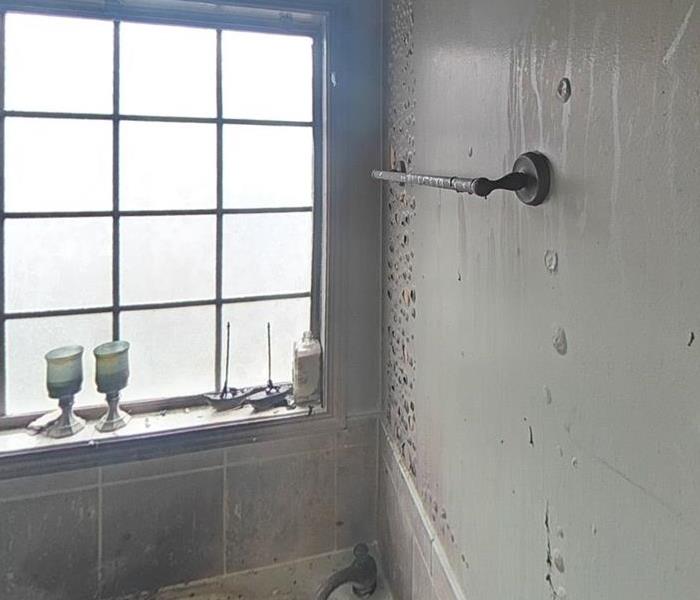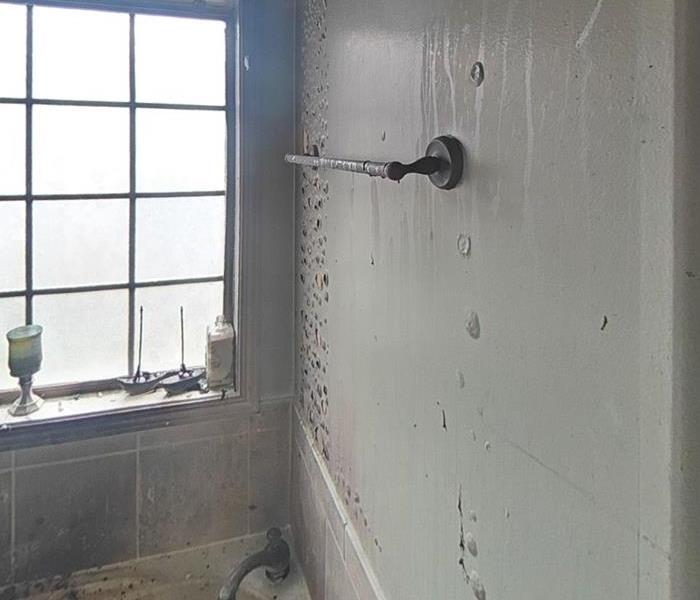Recent Posts
The Dangers of Mold Growth After a House Fire
12/9/2024 (Permalink)
After the trauma of a house fire, the focus is often on immediate damage from flames and smoke. However, a hidden danger that emerges in the aftermath is mold growth. Mold can quickly develop in areas exposed to water during firefighting efforts, turning an already devastating situation into an even more serious long-term issue. Understanding the dangers of mold growth after a house fire and knowing how to address it is critical for the safety and well-being of your home and family.
How Mold Growth Begins After a Fire
Water is one of the primary tools used to extinguish a fire, but this necessary process can leave your home vulnerable to mold. After the fire is out, any water left in the walls, floors, and ceilings can create the perfect environment for mold to thrive. Mold spores exist almost everywhere, and once they come into contact with moisture, they can begin to grow and spread in as little as 24 to 48 hours.
The humid and wet conditions after a fire, especially in hidden areas like behind drywall or under flooring, can allow mold to take root quickly. If the moisture isn’t removed and the space isn’t properly dried out, mold colonies can spread, leading to further damage to your property.
Structural Damage from Mold
Mold isn’t just a surface problem; it can have a serious impact on the structure of your home. Mold feeds on organic materials such as wood, drywall, and insulation, which can weaken these components over time. Prolonged mold exposure can compromise the integrity of walls, floors, and ceilings, leading to expensive repairs. After a fire, structural components may already be compromised by heat or smoke, and mold only exacerbates this damage.
Mold growth can be especially dangerous in areas that are difficult to access or inspect, such as attics, basements, and behind walls. Without professional intervention, it can continue to grow undetected, causing serious damage to your home’s foundation.
Importance of Prompt Mold Remediation
Dealing with mold after a fire requires swift action. Hiring a professional restoration company like SERVPRO® is essential to ensure that both water damage and potential mold growth are addressed thoroughly. Restoration professionals have the equipment and expertise to identify hidden moisture, dry out affected areas, and remove mold before it spreads. SERVPRO uses advanced mold remediation techniques to ensure that mold growth is stopped in its tracks, preventing further damage to your home.
Prevention and Restoration
In the wake of a house fire, preventing mold growth should be a top priority during the recovery process. It’s important to act quickly by contacting a restoration expert to assess the damage, remove excess moisture, and prevent mold from developing. Proper drying, dehumidification, and the use of specialized equipment are critical steps in ensuring your home doesn’t suffer long-term damage from mold after a fire.
By addressing mold early with SERVPRO of Bartlett/Cordova, you can restore your home to pre fire conditions and prevent further structural damage.
Mold in New Construction: Prevention and Early Intervention for a Lasting Build
11/6/2024 (Permalink)
Even in newly constructed homes and buildings, mold can become a problem if proper precautions aren’t taken. While mold is often associated with older, poorly maintained structures, new construction can also fall victim to mold growth, especially in areas where moisture control and ventilation are inadequate. Addressing mold early in the construction process is essential to preventing long-term damage and ensuring a safe, quality-built environment.
In this blog, we’ll explore why mold can appear in new construction, how to prevent it, and the importance of early intervention to safeguard your investment.
Why Mold Can Develop in New Construction
Mold thrives in environments with moisture and poor ventilation. During the construction process, certain conditions can lead to mold growth, even before the building is complete. Common reasons mold might develop in new construction include:
- Moist Building Materials: Construction materials like lumber, drywall, and insulation can absorb moisture if they’re exposed to rain or humidity during construction. If these materials aren’t allowed to dry thoroughly, mold can begin to grow.
- Inadequate Drying Time: In some cases, the rush to complete a building on time means that materials like drywall, paint, and insulation don’t have sufficient time to dry completely before construction continues, trapping moisture inside.
- Poor Ventilation: In early construction stages, buildings may lack proper ventilation, creating a humid environment that encourages mold growth.
- Water Leaks or Improper Sealing: Leaks from plumbing, roofs, or windows that aren’t properly sealed can introduce moisture, leading to mold in hard-to-reach places.
- Unaddressed Site Conditions: Construction on land with poor drainage or high humidity levels can make a building more prone to moisture-related issues.
Key Areas at Risk for Mold in New Construction
Mold can grow in a variety of places during construction, especially where moisture can accumulate. Common areas include:
- Framing and Lumber: Wood framing is vulnerable to mold if exposed to water or excessive humidity during the build.
- Drywall and Insulation: If drywall and insulation are installed while still damp or in areas with leaks, mold can quickly form inside walls.
- Subfloors: Water exposure during construction can cause subfloors to retain moisture, allowing mold to develop under carpets or other flooring materials.
- HVAC Systems: Mold can build up in air ducts if the HVAC system is not properly protected from construction dust and debris, or if humidity levels are not controlled.
Preventing Mold in New Construction
Preventing mold growth during new construction requires proactive measures. By following these steps, builders and property owners can minimize the risk of mold and ensure a long-lasting, mold-free structure.
1. Control Moisture During Construction
One of the most effective ways to prevent mold is to limit the amount of moisture that materials are exposed to. Store building materials like lumber and drywall in dry, covered areas to avoid contact with rain and humidity. If materials do get wet, they should be dried thoroughly before being used in construction.
2. Ensure Proper Ventilation
Good airflow is crucial to prevent moisture from getting trapped inside a building. Install temporary fans or ventilation systems during construction to allow materials to dry out completely, especially in basements, attics, and other poorly ventilated areas.
3. Schedule Construction Around Weather
Avoid scheduling key construction phases, such as roofing or window installation, during rainy or highly humid periods. This reduces the chance that materials will be exposed to excessive moisture during critical phases of the build.
4. Use Mold-Resistant Building Materials
Mold-resistant drywall, insulation, and paints are available and can provide extra protection against mold growth in high-moisture areas like bathrooms, basements, and kitchens. These materials are designed to resist mold even in damp conditions, offering long-term protection for new construction.
5. Inspect for Leaks Early and Often
Regular inspections of plumbing, roofing, and windows throughout the construction process can help identify and fix leaks before they lead to mold. Properly sealing all openings and joints and ensuring that all water drainage systems are functioning will prevent moisture from seeping into the structure.
SERVPRO’s Role in Mold Remediation for New Construction
If mold is found during construction, professional remediation services like SERVPRO® can provide the expertise needed to remove mold and ensure the building is safe. SERVPRO’s mold remediation services include:
- Inspection and Assessment: Identifying the source of moisture and the extent of mold growth.
- Mold Containment: Preventing the spread of mold to other parts of the building.
- Air Filtration: Using air scrubbers and HEPA filters to remove mold spores from the air.
- Mold Removal: Safely removing mold-infested materials and cleaning surfaces with antimicrobial treatments.
- Moisture Control: Addressing the underlying moisture issues to prevent future mold growth.
By working with SERVPRO, builders and property owners can ensure that mold is fully eradicated and the building is protected against future mold issues.
Mold prevention and early intervention during new construction are critical to ensuring the long-term durability and safety of the building. However, if mold is detected, professional remediation services like those offered by SERVPRO of Bartlett/Cordova are essential to address the problem quickly and effectively, ensuring your new construction remains mold-free for years to come.
Protecting Your Home Against Plumbing Failures
10/16/2024 (Permalink)
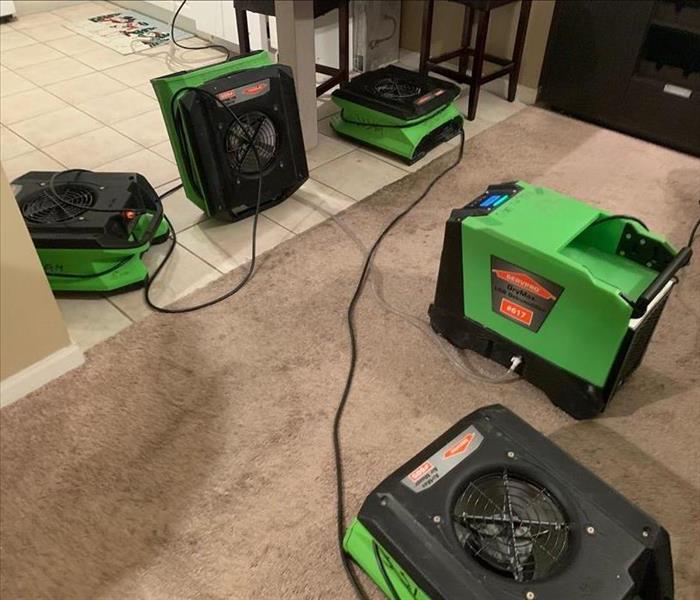 If you do experience a plumbing failure, don’t hesitate to reach out to our team for prompt and professional assistance.
If you do experience a plumbing failure, don’t hesitate to reach out to our team for prompt and professional assistance.
Plumbing issues can strike at any time, leading to significant water damage if not addressed promptly. At SERVPRO®, we understand the importance of safeguarding your home from potential plumbing failures. With a proactive approach, you can minimize the risk of leaks, burst pipes, and other plumbing-related disasters. In this blog, we’ll discuss the steps you can take to protect your home from plumbing failures and ensure your property remains safe and dry.
Regular Maintenance is Key
One of the most effective ways to prevent plumbing failures is through regular maintenance. By routinely inspecting your plumbing system, you can identify and address small issues before they become major problems. Check for leaks under sinks, around toilets, and near appliances such as dishwashers and washing machines. Additionally, keep an eye out for signs of corrosion or wear on pipes and fittings, as these can indicate potential failure points. Regularly flushing out your water heater and ensuring that your drains are clear of debris can also help maintain the integrity of your plumbing system.
Insulate Your Pipes
Cold weather is a common culprit behind burst pipes, which can lead to extensive water damage in your home. Insulating your pipes, especially those in unheated areas like basements, attics, and garages, is a simple yet effective way to prevent freezing. Pipe insulation can be easily installed and provides an extra layer of protection against the cold. Additionally, during extreme cold snaps, it’s a good idea to let your faucets drip slightly to keep water moving through the pipes, reducing the risk of freezing.
Be Mindful of What Goes Down the Drain
Clogged drains are another common cause of plumbing failures. To protect your pipes, be mindful of what you flush or wash down the drain. Avoid disposing of grease, oil, coffee grounds, and large food particles in the kitchen sink, as these can lead to blockages. In the bathroom, use a drain cover to catch hair and soap scum, which are frequent culprits of clogs. Regularly cleaning your drains with a mixture of hot water, baking soda, and vinegar can also help prevent buildup and keep your plumbing system running smoothly.
Know the Location of Your Main Water Shutoff Valve
In the event of a plumbing emergency, knowing the location of your main water shutoff valve is crucial. This valve controls the flow of water into your home, and shutting it off can prevent further damage if a pipe bursts or a major leak occurs. Make sure all household members know where the shutoff valve is located and how to operate it. Regularly check the valve to ensure it’s functioning properly and isn’t rusted or stuck.
Install a Leak Detection System
For added peace of mind, consider installing a leak detection system in your home. These systems can alert you to potential leaks before they escalate into significant issues. Some leak detectors can even be integrated with smart home systems, allowing you to monitor your plumbing from your smartphone. With a leak detection system in place, you’ll have an extra layer of protection against water damage caused by plumbing failures.
Taking proactive steps to protect your home against plumbing failures can save you time, money, and stress in the long run. Regular maintenance, pipe insulation, mindful disposal habits, and the installation of a leak detection system are all effective ways to safeguard your property. At SERVPRO, we’re ready to help you prevent and address any water damage that may arise from plumbing issues. If you do experience a plumbing failure, don’t hesitate to reach out to our team for prompt and professional assistance.
Preventing Arson in Commercial Buildings: Essential Strategies and SERVPRO's Role in Restoration
8/21/2024 (Permalink)
Arson is a serious crime that can have devastating effects on commercial properties, resulting in substantial financial loss, safety risks, and operational disruption. Preventing arson involves implementing effective security measures, raising awareness, and being prepared for rapid response and recovery. In this blog, we will discuss key strategies to prevent arson in commercial buildings and how SERVPRO® can assist with restoration in the unfortunate event of an arson incident.
Preventive Measures to Avoid Arson
Enhanced Security Systems: Install comprehensive security systems that include surveillance cameras, motion detectors, and alarm systems. These measures can deter potential arsonists and provide valuable evidence in case of an incident. Ensure that the premises are well-lit, particularly in poorly visible areas such as alleys, parking lots, and building perimeters. Adequate lighting can reduce the likelihood of arson by making the area less attractive to potential offenders.
Keep the building well-maintained and ensure that all doors, windows, and other entry points are secure. Regularly inspect and repair any broken or malfunctioning security equipment and entry points. Implement strict fire safety policies, including controlled use of fire within the premises. Ensure that employees are trained on these policies and understand the importance of fire safety.
Utilize surveillance systems to monitor the property 24/7. Consider using remote monitoring services to enhance the security of your commercial property. Engage with the local community and encourage reporting of suspicious activities. A community vigilant about local issues can help deter criminal activities. Develop and regularly update emergency preparedness plans, including evacuation routes and fire safety measures. Conduct regular drills to ensure that all employees are familiar with the procedures.
SERVPRO's Role in Restoration
Rapid Response: In the unfortunate event of an arson fire, SERVPRO of Bartlett/Cordova provides rapid response services to mitigate damage and begin the restoration process immediately. Quick action can significantly reduce the overall damage and help in restoring the property swiftly.
Damage Assessment: We have trained professionals who can conduct thorough assessments to determine the extent of the fire and smoke damage. This assessment is crucial for developing an effective restoration plan.
Fire Damage Restoration: We specialize in fire damage restoration, including smoke and soot removal, odor elimination, and structural repairs. Their expertise ensures that all affected areas are thoroughly cleaned and restored to pre-fire conditions.
Content Cleaning and Restoration: Our team offers content cleaning and restoration services, which involve cleaning and repairing damaged furnishings, equipment, and other personal property affected by the fire.
Reconstruction Services: In cases where extensive damage has occurred, SERVPRO provides reconstruction services to rebuild and restore the damaged structures to their original state.
Prevention Advice: We also provide advice and tips on preventing future incidents, helping businesses implement better fire safety and security measures.
Preventing arson in commercial buildings requires vigilance, effective security measures, and community involvement. While preventing arson is crucial, being prepared for quick and effective restoration is equally important. SERVPRO of Bartlett/ Cordova has experience and expertise in fire damage restoration and can be invaluable in recovering from an arson incident, ensuring that your commercial property is restored safely and efficiently. For businesses concerned about fire safety, partnering with SERVPRO can provide peace of mind and expert support in the face of adversity.
How Can You Remove and Prevent Mold in Carpets?
7/11/2024 (Permalink)
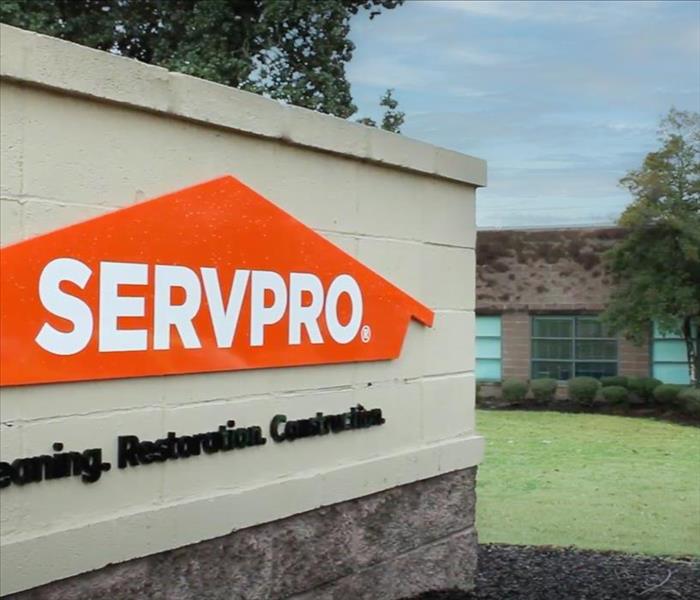 Our experts are equipped with the right tools and expertise to handle any mold situation in your home, ensuring your environment is safe and clean.
Our experts are equipped with the right tools and expertise to handle any mold situation in your home, ensuring your environment is safe and clean.
Mold in carpets can be a tricky issue for homeowners. Not only can it ruin the appearance of your carpets, but it can also contribute to an unpleasant odor in your home. Understanding how to effectively remove and prevent mold in your carpets is key to maintaining a clean and fresh home environment. In this blog, we'll explore the steps you can take to tackle mold in your carpets and keep it from coming back.
Identifying Mold in Carpets
Firstly, it's important to know how to identify mold in your carpets. Mold typically appears as patches of black, white, or green discoloration and can often be accompanied by a musty, earthy smell. It’s more likely to occur in areas that remain damp or have been exposed to moisture, such as basements, near bathroom doors, or any places where water has spilled and not been properly dried.
Step-by-Step Guide to Removing Mold from Carpets
- Before you start the mold removal process, protect yourself with gloves, a mask, and goggles to prevent contact with mold spores.
- Mold thrives in moisture, so it's crucial to thoroughly dry the affected area. Use fans or dehumidifiers to remove excess moisture from the room and the carpet.
- Using a vacuum cleaner with a HEPA filter, carefully vacuum the affected area to remove any loose mold spores from the carpet. Dispose of the vacuum bag or clean the canister immediately after.
- You can use a commercial mold remover or a natural solution like white vinegar or a mixture of water and baking soda. Spray the solution onto the affected area, ensuring it's sufficiently soaked, and let it sit for at least an hour.
- Using a scrub brush, gently scrub the area to remove the mold from the carpet fibers.
- Thoroughly rinse the area with clean water and dry it completely with fans or a wet-dry vacuum.
- Check the area for any remaining signs of mold. If traces of mold are still visible, repeat the cleaning process.
Preventing Mold in Carpets
Prevention is always better than cure, especially when it comes to mold in your carpets. Here are some tips to prevent mold growth:
Control Indoor Humidity
Keep indoor humidity levels low (ideally between 30% and 50%) by using dehumidifiers and air conditioners.
Immediate Drying of Wet Areas
Act quickly to dry any areas of your carpet that become wet. The sooner you dry the carpet, the less chance mold has to grow.
Regular Carpet Cleaning
Regular vacuuming and annual deep cleaning of carpets can prevent the buildup of mold spores in the carpet fibers.
Proper Ventilation
Ensure your home is adequately ventilated, especially in areas prone to dampness like kitchens and bathrooms.
Use Mold Inhibitors
Consider using mold inhibitors which can be added to paints, carpets, and other fibrous materials to prevent mold growth.
Mold in carpets doesn’t have to be a permanent problem. With the right approach to cleaning and prevention, you can remove existing mold and minimize the risk of future growth. Remember, if the mold problem in your carpet is extensive or if the carpet has been wet for a long time, it might be best to call in professionals like SERVPRO of Bartlett/Cordova. Our experts are equipped with the right tools and expertise to handle any mold situation in your home, ensuring your environment is safe and clean.
Restoring Landscaping After Water Damage: Lawn, Garden, and Soil
6/12/2024 (Permalink)
 In this blog, we discuss effective strategies for restoring your landscaping after water damage and bringing your outdoor space back to life.
In this blog, we discuss effective strategies for restoring your landscaping after water damage and bringing your outdoor space back to life.
Water damage can extend beyond the interior of your home and affect your outdoor landscaping, including your lawn, garden, and soil. When faced with water-damaged landscaping, knowing how to restore these outdoor areas is essential for maintaining the beauty and health of your property. In this blog, we will discuss effective strategies for restoring your landscaping after water damage and bringing your outdoor space back to life.
Assessing the Damage
Before beginning the restoration process, assess the extent of the water damage to your lawn, garden, and soil. Look for signs of standing water, soil erosion, sediment deposition, and any visible damage to plants, grass, or landscaping features. Understanding the scope of the damage will help guide your restoration efforts.
Drainage and Water Removal
If there is standing water on your lawn or garden, proper drainage is essential for preventing further damage and promoting recovery. Use tools like shovels, rakes, and aeration devices to improve drainage and facilitate water removal from waterlogged areas. Creating channels for water to flow away from the affected areas can help prevent soil saturation and promote drying.
Soil Aeration and Compaction Relief
Water damage can lead to soil compaction, which hinders proper water and air circulation to the roots of your plants. Utilize aeration tools to loosen compacted soil and improve its ability to absorb water and nutrients. This will encourage healthier growth and recovery for your lawn and garden.
Remove Debris and Contaminants
Clear debris, sediments, and any contaminants that may have been deposited on your lawn and in your garden as a result of water damage. Carefully remove any foreign materials to prevent smothering and damaging your plants and grass.
Reseeding and Planting
If water damage has caused significant damage to your lawn or garden, reseeding and replanting may be necessary to restore the greenery and vibrancy of your landscaping. Choose appropriate grass, plants, and flowers suited for your climate and soil conditions. Proper preparation of the soil, including adding organic matter and nutrients, will help promote successful growth and recovery.
Fertilization and Soil Amendments
After water damage, your soil may benefit from fertilization and soil amendments to replenish essential nutrients and promote healthy plant growth. Utilize fertilizers and organic amendments to restore the soil's fertility and support the recovery of your landscaping.
Professional Assistance for Restoration
In some cases, water damage to your landscaping may be extensive and require professional assistance for comprehensive restoration. If you are dealing with severe landscape damage, consider reaching out to experienced restoration professionals who specialize in restoring water-damaged outdoor areas. Their expertise and resources can help ensure a successful recovery for your landscaping.
Monitoring and Maintenance
After implementing restoration efforts, monitor the progress of your lawn, garden, and soil recovery. Proper maintenance, including regular watering, mulching, and weed control, will be essential for supporting the ongoing health and restoration of your landscaping.
In conclusion, restoring your landscaping after water damage is vital for preserving the beauty and integrity of your outdoor space. By taking proactive steps to assess the damage, improve drainage, rejuvenate the soil, and promote plant recovery, you can effectively restore your lawn, garden, and soil. Remember, if you require professional assistance for the restoration of water-damaged landscaping, contact SERVPRO® for expert guidance and support. Our experienced professionals can help you navigate the restoration process and bring your outdoor space back to life.
The Dos and Don'ts of Using Generators During Storm Outages
5/15/2024 (Permalink)
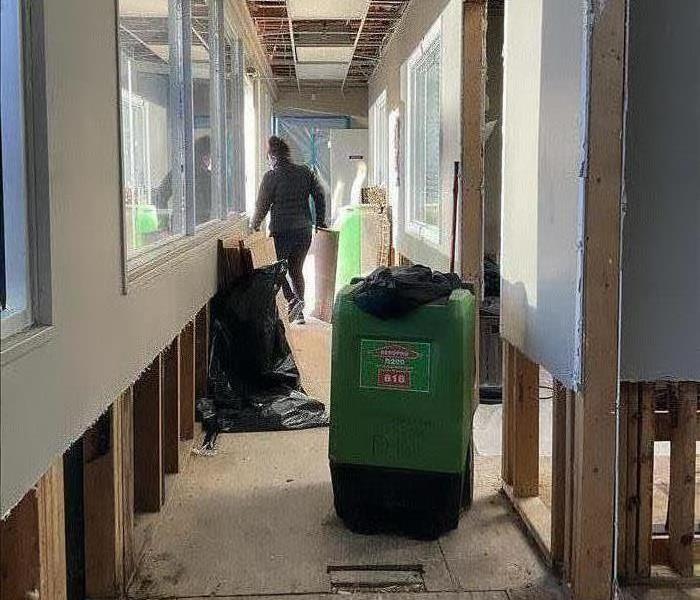 In this blog post, we will explore the dos and don'ts of using generators during storm outages.
In this blog post, we will explore the dos and don'ts of using generators during storm outages.
When a storm emergency strikes and power outages occur, having a generator can be a lifesaver. Generators provide an alternative source of electricity and help keep essential appliances and devices running during the outage. However, it's essential to use generators safely to prevent accidents and potential damage. In this blog post, we will explore the dos and don'ts of using generators during storm outages to ensure your safety and the proper functioning of your generator.
The Dos
- DO Choose the Right Generator: Select a generator that meets your power needs. Consider the appliances and devices you want to power, and choose a generator with the appropriate wattage capacity.
- DO Follow Manufacturer's Instructions: Read and understand the manufacturer's instructions before operating your generator. Different generators have specific requirements and safety guidelines that must be followed.
- DO Set Up the Generator Outside: Always use generators in well-ventilated areas outdoors to prevent carbon monoxide buildup. Never operate a generator in an enclosed space, such as a garage or basement, as it can lead to carbon monoxide poisoning.
- DO Use a Transfer Switch: Install a transfer switch to connect the generator to your home's electrical system safely. This ensures that power is distributed properly and prevents electricity from back-feeding into power lines, which can be dangerous for utility workers.
- DO Allow the Generator to Cool Down: Before refueling the generator, turn it off and allow it to cool down for a few minutes. This minimizes the risk of fuel igniting and causing a fire.
- DO Manage Fuel Safety: Store fuel in approved containers and in a safe location away from the generator and other flammable materials. Never refuel a generator while it is running or still hot.
The Don'ts
- DON'T Connect Generators Directly to Household Wiring: Connecting a generator directly to your home's electrical system without a transfer switch can back-feed electricity into the power lines, posing a threat to utility workers and potentially causing damage to your generator.
- DON'T Overload the Generator: Ensure that the total wattage of the appliances and devices you connect to the generator does not exceed its capacity. Overloading the generator can lead to overheating, damage, and safety hazards.
- DON'T Operate a Generator in Wet Conditions: Keep the generator and its outlets dry to prevent electrical shock. If operating the generator in wet conditions is unavoidable, use a generator cover or operate it under a shelter to protect it from moisture.
- DON'T Forget Routine Maintenance: Regularly inspect and service your generator to ensure it is in good working condition. Follow the maintenance schedule provided by the manufacturer to prevent potential breakdowns during storm outages.
- DON'T Leave the Generator Unattended: Always monitor the generator while it is running to ensure its safe and proper operation. If you need to leave the house, turn off the generator before doing so.
In conclusion, using generators during storm outages can provide much-needed power, but safety should be a top priority. By following the dos and don'ts listed above, you can ensure the safe operation of your generator and prevent accidents and damage. Make sure to incorporate these guidelines into your storm damage plan to be prepared for any future power outages. At SERVPRO®, we are here to help with any storm damage cleanup and restoration needs after storms and power outages.
The Benefits of Fire Damage Restoration Certification
4/17/2024 (Permalink)
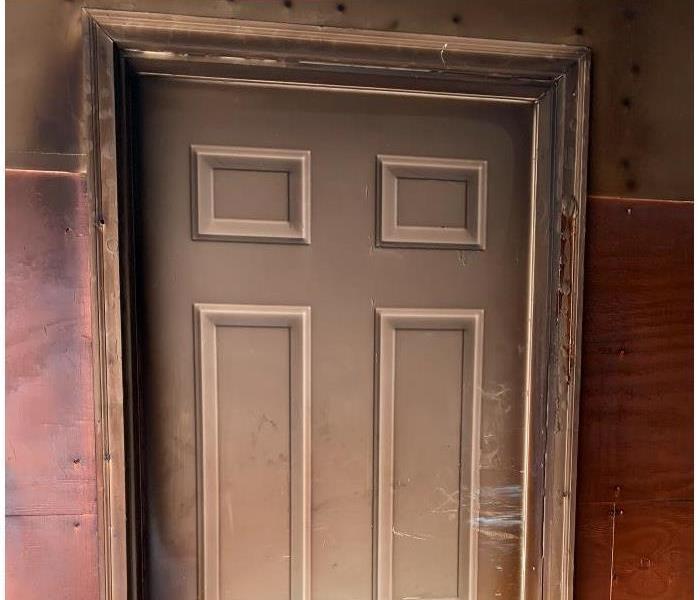 In this blog, we will explore the benefits of having a fire damage restoration certification and how it can elevate your business to new heights.
In this blog, we will explore the benefits of having a fire damage restoration certification and how it can elevate your business to new heights.
In the field of fire damage restoration, possessing the necessary skills and knowledge is crucial to ensure effective and efficient restoration services. Obtaining a fire damage restoration certification can provide numerous benefits for restoration businesses. In this blog, we will explore the benefits of having a fire damage restoration certification and how it can elevate your business to new heights.
Enhanced Expertise and Knowledge
Fire damage restoration certification programs provide comprehensive training on the principles and techniques of fire remediation. By becoming certified, restoration professionals gain a deep understanding of fire damage restoration procedures, industry best practices, and the latest advancements in the field. This knowledge equips them with the expertise needed to handle various situations and deliver high-quality restoration services.
Credibility and Trust
Having a fire damage restoration certification enhances your business's credibility and instills trust among clients and insurance providers. Certification demonstrates your commitment to professionalism, ethical conduct, and industry standards. It assures customers that they are dealing with competent and qualified professionals who follow established guidelines for fire damage cleanup and restoration. This increased credibility can lead to greater customer satisfaction and positive word-of-mouth referrals.
Competitive Advantage
In a highly competitive industry, securing a competitive edge is crucial. By obtaining a fire damage restoration certification, you set yourself apart from your competitors who may lack proper training or certification. Potential clients are more likely to choose a certified restoration specialist over others due to the assurance of expertise and professionalism. Certification can give your business a competitive advantage, ultimately leading to increased opportunities and growth.
Compliance with Regulations and Insurance Requirements
Fire damage restoration certifications ensure that your business complies with industry regulations and insurance requirements. Insurance providers often require certification as proof of expertise before approving claims or partnering with restoration companies. By obtaining certification, you position your business to work seamlessly with insurance providers and navigate the requirements efficiently, contributing to a smoother claims process.
Ability to Tackle Complex Restoration Projects
Fire damage restoration can be a complex and challenging process, requiring a comprehensive understanding of the various factors involved. Certification equips restoration professionals with the necessary skills to assess, plan, and execute restoration projects effectively, regardless of size or complexity. With certification, your business can confidently tackle complex projects, ensuring successful outcomes and satisfied clients.
Professional Development and Recognition
Fire damage restoration certifications provide ongoing professional development opportunities and keep restoration professionals updated on the latest industry trends, techniques, and technologies. Continued education and training ensure that your business stays at the forefront of the industry and is equipped to meet evolving customer needs. Additionally, with certification, your business gains recognition among peers and industry experts, enhancing your reputation and opening doors to collaboration and networking opportunities.
Obtaining a fire damage restoration certification offers numerous benefits for restoration businesses. From enhanced expertise and credibility to compliance with regulations and a competitive edge, certification elevates the professionalism and reputation of your business. By investing in certification and continually updating your knowledge and skills, you position your business for success in the dynamic field of fire damage cleanup and restoration. If you're ready to take your restoration business to the next level, consider the advantages of becoming fire restoration certified with a respected certification program like SERVPRO®.
The Power of Master Service Agreements: Fast Response and Strong Relationships
8/23/2023 (Permalink)
Do you have a super hero on speed dial?In the fast-paced world of business, rapid response is essential, especially during emergencies. Picture this: a national heatwave causes an abrupt A/C outage, with the potential to turn a hospital into an oven of stress and panic. In times like these, having a Master Service Agreement (MSA) in place can be the lifeline that transforms panic into a strategic, well-managed solution.
A Race Against Time
SERVPRO® Team Nicholson's Scott Askew and his crew proved the power of an MSA recently. Within hours of receiving the call, our team was on-site, ready to help. Seven hours later, cooling equipment was up and running - thanks to our subcontractor, Coastal Mechanical. We even had a team of welders fabricating quick hose connections in the hospital parking lot in order to connect the mobile chillers to the hospital's existing cooling system.
By the evening, the hospital was cooling to a comfortable temperature, all without displacing patients or disrupting critical operations. The team avoided an evacuation and multiple diversions, where a hospital has to transfer patients to another hospital. In the end, all this was possible without having to tell an MSA client, "no," — the word doesn't exist in our vocabulary anyways.
Building a Bridge to Swift Solutions
The MSA is more than just a contract - we become your logistics team, your trusted solutions provider. The last thing a business owner wants is to face a double emergency – the primary situation and its repercussions. Like the scramble to evacuate patients, and to secure specialized equipment, like chillers, at odd hours in order to prevent high temperatures from spoiling medication. An MSA eliminates the chaos, minimizing the complexity and severity of interruptions to business.
The Value of Strong Relationships
In the realm of crisis management, strong relationships are worth their weight in gold. Our connections with clients, subcontractor partnerships, and a network of SERVPRO teams across the nation, our bonds serve as the cornerstone of effective and efficient solutions. When challenges arise, leveraging our network's capabilities means clients have access to additional equipment and resources quickly.
In a world of emergencies, a Master Service Agreement isn't just a contract – it's a promise - to provide rapid response, leverage strong relationships, and transform potential chaos into smoothly managed solutions. It's the assurance that when a crisis arises, our team of professionals is ready to shift the perspective - becoming your total solutions provider for whatever happens.
What Happens When I Have Water Damage?
8/15/2023 (Permalink)
Nobody likes the unexpected. It can be scary and overwhelming, in worst cases, time consuming and costly. SERVPRO of Bartlett / Cordova will try and ease the unexpected blow. We're a team of highly trained individuals with specialized equipment, tools, and skills needed to make sure that your water damage is taken care of swiftly and adequately.
What Can You Expect When You Call Us?
One of our employees will first take your call; we'll take your name, number, and address down and then ask detailed questions to know exactly what your situation looks like. As we hang up the phone with you, we'll dispatch a team out to your home and/or business so they can be on-site as quickly as possible. Additionally, you'll be assigned an admin within the office to take care of your job – they will give you updates and work with your insurance provider.
Once we get to your home, we will extract any standing water that needs to be removed using either a handheld extractor or an extractor that we can ride on. We will then place fans and dehumidifiers to help with the drying process.
In the next few days, we will continue to monitor the drying process, making sure that we inspect all possible affected areas for water damage. If you find yourself with an unexpected water loss, give SERVPRO of Bartlett / Cordova a call at (901) 382-0900! We'll help make it "Like it never even happened."






 24/7 Emergency Service
24/7 Emergency Service
